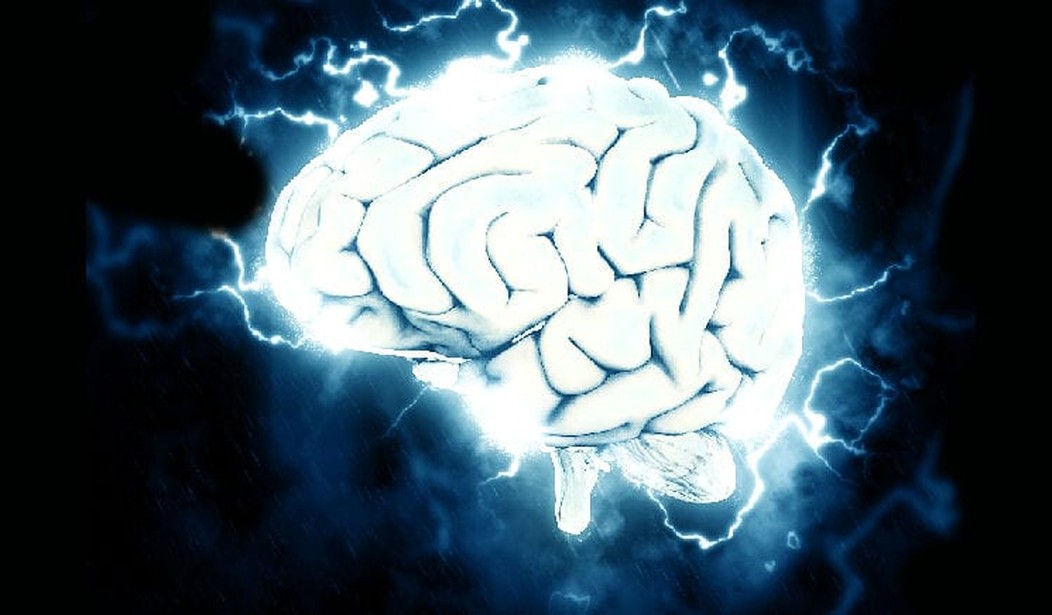One of the recurring themes of science fiction has been the idea of science shoring up, improving, or the wholesale replacing of memories. In fact it is a major subplot of my own novel, Darkship Renegades.
Like many other things that seemed impossible, or so far-fetched as to be almost fantasy, it turns out it’s now a reality.
Scientists at Wake Forest Baptist Medical Center and the University of Southern California (USC) have managed to create and implant a prosthetic system that uses a person’s own memory patterns to facilitate the brain’s ability to create and recall memories.
In the pilot study, published in today’s Journal of Neural Engineering (and pasted below), participants’ short-term memory performance showed a 35 to 37 percent improvement over baseline measurements. The research was funded by the U.S. Defense Advanced Research Projects Agency (DARPA).
“This is the first time scientists have been able to identify a patient’s own brain cell code or pattern for memory and, in essence, ‘write in’ that code to make existing memory work better, an important first step in potentially restoring memory loss,” said the study’s principal investigator Robert Hampson, Ph.D., professor of physiology/pharmacology and neurology at Wake Forest Baptist (and a personal friend.)
The particular type of memory targeted was episodic memory. This memory is the one most commonly lost by people with Alzheimer’s disease, stroke and head injury. In other words, the conditions that most often rob people of their ability to function intellectually.
Episodic memory is the storing of knowledge which is new and useful within a short space of time, such as where you parked your car or exactly what your character was doing in the last chapter you wrote before going downstairs for a cup of coffee, not long-term, stored memory like what you learned in school, your Social Security number, or the way to your first home.
The researchers enrolled epilepsy patients at Wake Forest Baptist who were participating in a diagnostic brain-mapping procedure that used surgically implanted electrodes placed in various parts of the brain to pinpoint the origin of the patients’ seizures. Using the team’s electronic prosthetic system based on a multi-input multi-output (MIMO) nonlinear mathematical model, the researchers influenced the firing patterns of multiple neurons in the hippocampus, a part of the brain involved in making new memories in eight of those patients.
First, they recorded the neural patterns or “codes” while the study participants were performing a computerized memory task. The patients were shown a simple image, such as a color block, and after a brief delay where the screen was blanked, the patients were then asked to identify the initial image out of four or five on the screen.
The USC team, led by biomedical engineers Theodore Berger, Ph.D., and Dong Song, Ph.D., analyzed the recordings from the correct responses and synthesized a MIMO-based code for correct memory performance. The Wake Forest Baptist team played back that code to the patients while they performed the image recall task. In this test, the patients’ episodic memory performance showed a 37 percent improvement over baseline.
In a second test, participants were shown a highly distinctive photographic image, followed by a short delay, and asked to identify the first photo out of four or five others on the screen. The memory trials were repeated with different images while the neural patterns were recorded during the testing process to identify and deliver correct-answer codes.
After another longer delay, Hampson’s team showed the participants sets of three pictures at a time with both an original and new photos included in the sets, and asked the patients to identify the original photos, which had been seen up to 75 minutes earlier. When stimulated with the correct-answer codes, study participants showed a 35 percent improvement in memory over baseline.
“We showed that we could tap into a patient’s own memory content, strengthen it and feed it back to the patient,” Hampson said. “Even when a person’s memory is impaired it is possible to identify the memory content that is correct and separate that from content that is incorrect. We can then use the correct information to assist patients’ own brain in making correct memory.
“To date we’ve been trying to determine whether we can improve the memory skill people still have. In the future, we hope to be able to help people when they start losing specific memories, such as where they live or what their grandkids look like.”
The current research is the culimanition of 20 years of preclinical research on memory codes by Hampson and Sam Deadwyler, Ph.D., professor of physiology and pharmacology at Wake Forest Baptist, which usedthe same type of stimulation to restore and facilitate memory in animal models.
The MIMO system was developed by researchers at the University of Southern California led by Theodore W. Berger, Ph.D., and Dong Song, Ph.D.
In a country where people are living ever longer, this research is vital.
To a certain extent, a decay of memory is inevitable over a certain age, and the ability to circumvent it is the ability to remain productive and useful for the length of your life.
Of course, that too is science fiction, or used to be, the ability to live a full life “in full control of your faculties.” Maybe soon enough it won’t be “fiction” but just “science.”
The future is here, and scientists at Wake Forest Baptist Medical Center and the University of Southern California (USC) are ushering it in.









Join the conversation as a VIP Member